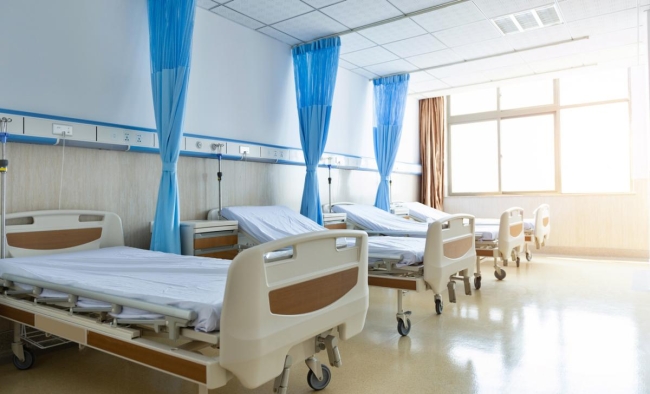You have /5 articles left.
Sign up for a free account or log in.

iStockphoto.com/baona
The pandemic -- and the financial ruin it brought -- has left no industry or institution unharmed, including the institutions playing a key role in ending it: hospitals connected to colleges and universities.
Many states in March halted elective surgeries in order to clear out hospital beds and make room for potential COVID-19 patients. Restrictions on elective surgeries -- surgeries that can be scheduled in advance -- have led to a drop in patient visits and torpedoed a significant revenue stream for hospitals.
“Many of our member institutions are experiencing a 30 percent, 40 percent, 50 percent drop in the number of patients who are in the hospital,” said Janis Orlowski, chief health care officer at the Association of American Medical Colleges.
Moody’s Investors Service in March changed the outlook for nonprofit hospitals from stable to negative, citing declining revenues due to the loss of elective procedures and increased costs to prepare for COVID-19 patients.
“Our baseline assumption is that we will see some containment of the outbreak in the second half of 2020 and that the economy will gradually recover. However, there is a high degree of uncertainty. Therefore, risk that the outbreak will be prolonged and the economic fallout will be more severe is elevated,” the report states.
Last week, dozens of states laid out plans to at least partially lift bans on elective surgery. In New York, Governor Andrew Cuomo announced that a hospital could begin to perform elective procedures as long as 25 percent of hospital beds are available in the hospital and the county in which it is located. There also must be fewer than 10 new COVID-19 hospitalizations at the hospital in the past 10 days.
Indiana University Health has been postponing nonessential surgeries since March 15. The hospital system recently released its first-quarter financial report, showing that operating income is down about 50 percent from last year.
“Last year, through the first quarter, we had about $154 million in operating income. We only had about $78 million this year,” said Jennifer Alvey, chief financial officer at IU Health.
Whether the hospital system will make up that loss is still up in the air.
“It’s really hard to predict. It depends on whether or not we have a second wave come through later this year,” Alvey said. If the virus comes back, “we would have a very difficult time making any of that up.”
In addition to lost revenue, hospitals have taken on new expenses to prepare for COVID-19 patients, including buying personal protective equipment and ventilators, transforming outpatient facilities to handle inpatient care, and adding intensive care unit beds. IU Health has also continued to pay wages for all staff members.
AAMC member institutions are being paid extra for COVID-19 cases, Orlowski said.
“But what they’re finding is [these patients are] very resource intensive,” she added. “Their long stays on ventilators, long ICU stays -- people are very sick. So even though there’s been an increase in payment, people are utilizing more resources.”
The IU Health academic health center is taking on a disproportionate number of COVID-19 patients.
Academic health centers “are generally well equipped to take on the most complex and most sick patients, and so as we have COVID-19 patients that are really ill and need to be on ventilators, we have more capacity in our academic health center to care for those patients,” Alvey said.
The finances of academic medical centers and their affiliated medical schools are “often completely intertwined,” according to Orlowski.
“Many hospitals that have schools of medicine or universities that they work with have what is called a ‘funds flow’ to essentially provide support for the educational research mission,” she said.
For example, the hospital and university may recruit faculty together, Orlowski said. A person will work at the school, conduct research and also work at the health system as a physician.
The exact financial arrangement varies by institution. Because of this, it’s difficult to know how a university’s finances could affect its affiliate hospital and vice versa, said Ken Rodgers, director at S&P Global.
The University of Washington, he noted, directly controls and operates its medical center. On the other end of the spectrum, Johns Hopkins Medicine is a “totally separate entity” from the university, Rodgers said.
“The concern, frankly, is probably more so on the university side these days than it is on the health care side,” Rodgers said. “The [financial] impact is on a much shorter time frame for the medical centers.”




